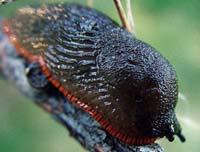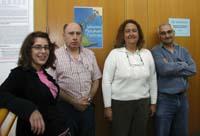Measure of the growth of the bazas

The bazos, like most animals, priman the first somatic growth. That is, structures alien to reproduction grow. Once they grow enough, they begin to grow. All this about a year, he thinks.
In addition, the bazos are protandral sequential hermaphrodite species, that is, each grain has both sexes but not at the same time: first they are males and then females. When the time comes to change sex, the male must create a new reproductive apparatus, the reproductive apparatus of the female. And if the female wants to lay their eggs in the proper time of the year.
To obtain the raw materials necessary for this urgent task, it is not enough to obtain what can be obtained from food. Therefore, as the demands of the female reproductive apparatus are increasing, in addition to the exogenous sources of raw materials, the need arises to take advantage of endogenous sources. To do this, the spleen begins to use all the reserves accumulated in somatic growth. During the reproductive period, the reproductive apparatus only grows and the rest of the structures gradually diminish. For example, a spleen female can put more than 200 eggs in one place and lose about a quarter of her weight. To take measure on the amount of the reproductive effort of the bazas, we will say that the weight that a female loses in the laying can be compared with the loss of 15 kg in the delivery of a woman of 60 kg. The female is so exhausted that she usually dies in a single day or a couple of days.
Mathematical equations help
In the department of Genetics, Physical Anthropology and Animal Physiology of the UPV/EHU, all these changes are measured and investigated: how much serene grow, what happens with each part of the body and how this non-existent structure (the female reproductive apparatus) is created, among others. In short, they investigate the dynamics of growth of the bazos. And it is that growth changes when the spleen is child, young, male or female. To analyze this growth dynamics they use mathematics. That is, they try to define it mathematically through linear and non-linear mathematical equations. The objective is to make predictions on physiological and anatomical behavior of the strokes through various mathematical equations.
First, they form a polynomial with various variables (initial weight of the spleen, weight that is lost or acquired with the passage of time, food proteins, carbohydrates, starch..). The importance and type of influence (positive or negative) of each variable is given by the coefficients and signs. All this allows to predict quantitatively how the growth of serene will occur.

With more complex mathematical equations, they define the dynamics of growth of body parts and the ways to relate them to each other. To predict the growth dynamics of body parts, complex mathematical equations of non-linear regressions are needed with exponential terms. Some of these equations are designed and adapted to explain the dynamics of growth of the bazos. The terms of these equations must have a biological meaning.
To explain the coordinated functioning of all parts of the body define dynamic models. In these dynamic models, the dynamics of growth of the body parts depend not only on the resources derived from food, but also on the relationships and relationships between the body parts.
The UPV research team has been investigating the complexity of serene growth for years. In view of these peaceful animals, few can imagine that their growth is so complex.






